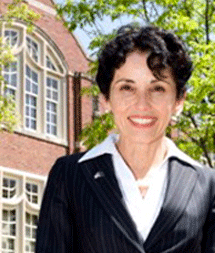France Cordova was born August 5, 1947 in Paris. She grew up in California with 11 younger brothers and sisters. Though she majored in English while at Stanford, she worked on an anthropological project near Oaxaca, Mexico one summer. She used her experiences to write a short novel, The Women of Santo Domingo (1969). But that year while watching the moon landings on television France Cordova’s earlier interested in astronomy and space science began to reassert itself. At the time she was a guest editor for Mademoiselle but eventually she returned to school to earn a Ph.D. in physics (1979) at CalTech. Her interest in writing persisted while in graduate school and for a time she was a staff writer for the L. A. Times.
After graduation Dr. Cordova began work as an astrophysicist at Los Alamos National Laboratory, studying white dwarfs and pulsars. In 1988 she edited the book, Multiwavelength Astronomy, a collection of papers reviewing the entire field. From 1989 -1993 Dr. Cordova was a Professor, and Chair, of the Department of Astronomy and Astrophysics at Pennsylvania State University. She came Chief Scientist for NASA and served from 1993-1996.

In 1997 she became a Professor of Physics at UC, Santa Barbara (and Vice-Chancellor of Research) before accepting the position of Chancellor at UC, Riverside in 2002. In 2007, Dr. Cordova became President of Purdue University. Her vitae at the time included more that 150 published articles. President Cordova retired in 2012 and became President Emerita. She served as Chair of the Board of Regents for the Smithsonian Institute. On March 31, 2014 Dr. Cordova became the Director of the National Science Foundation. She retired as Director in March, 2020.
When Pathfinder landed on Mars July 4, 1997 a plaque dedicated to France Cordova from NASA rode inside. In 1996 she was one of the three scientists highlighted in “The Path of Most Resistance” part of the PBS series, Breakthroughs: The Changing Face of Science in America. She was also a featured scientist in the PBS program, Life Beyond Earth, in 1999. More details of her life and work are in Notable Hispanic American Women, Book II (1998) edited by Joseph M. Palmisano.
On May 11, 2020 she was interviewed for the AIP Oral History project.
